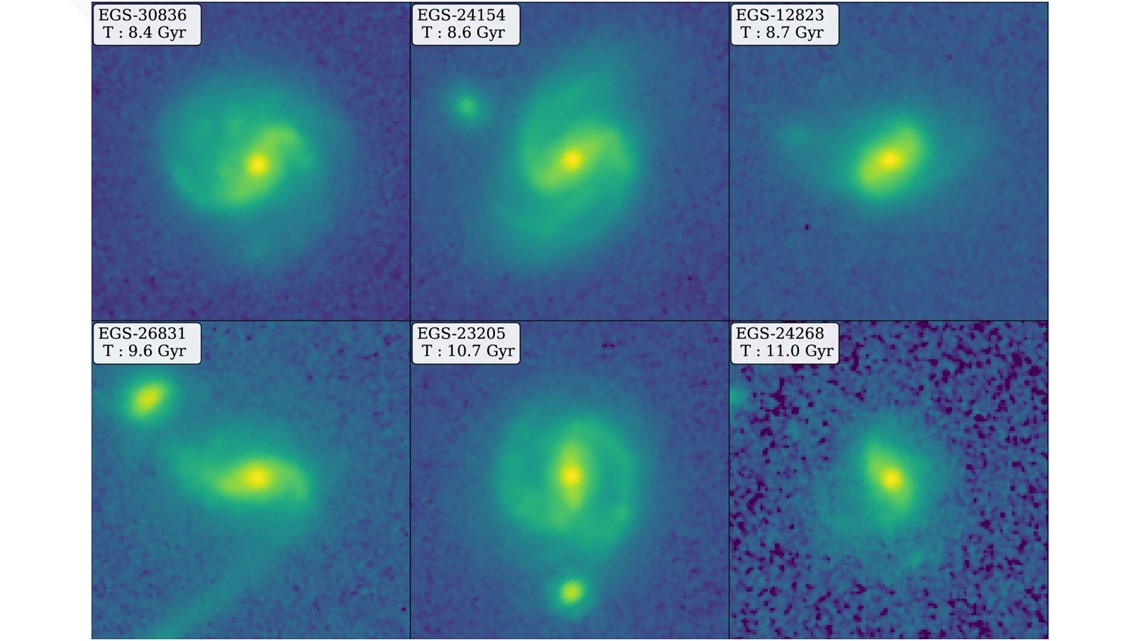AUSTIN, Texas — New images collected by the James Webb Space Telescope (JWST) and analyzed by staff at the University of Texas at Austin show galaxies dated farther back in time than ever discovered.
Multiple professors and students from UT have contributed to a recent astronomical discovery that shows galaxies from 11 billion years ago, which restructures how the age of the universe is determined.
The new images show two galaxies, EGS-23205 and EGS-24268, with stellar bars, the elongated features of stars stretching from the center of the galaxy into the outer disks, at the time the universe was 25% of its age. These stellar bars were not seen in the images taken by the Hubble Space Telescope, but are now visible in the images taken by the JWST.
"I took one look at these data, and I said 'we are dropping everything else!'" said Shardha Jogee, professor of astronomy at UT Austin. “The bars hardly visible in Hubble data just popped out in the JWST image, showing the tremendous power of JWST to see the underlying structure in galaxies."
The new images provided by JWST are able to see these structures in galaxies better than Hubble could provide because the larger mirror on JWST allows for more light-gathering to see farther with better resolution, and implements longer infrared wavelengths to see through space dust.


The stellar bars help galaxy evolution by funneling gas into the central regions of the galaxy, which encourages star formation. Jogee explained that the bars solve the "supply chain problem in galaxies" by transporting the gas to an area that rapidly converts it into new stars at a rate of 10-100 times faster than the rest of the galaxy.
Furthermore, the bars help develop supermassive black holes in the center of the galaxies by moving the gas in a certain direction.
“This discovery of early bars means galaxy evolution models now have a new pathway via bars to accelerate the production of new stars at early epochs,” Jogee said.
The discovery, which has been co-authored by over 15 researchers across the world, show examples of four other galaxies with stellar bars that are from over 8 billion years ago. The co-authors from UT include Steven Finkelstein, Micaela Bagley and Maximilien Franco. UT undergraduate students Eden Wise and Zilei Chen assisted in the research by visually reviewing hundreds of galaxies for the bars.
“For this study, we are looking at a new regime where no one had used this kind of data or done this kind of quantitative analysis before,” said Yuchen “Kay” Guo, a graduate student who led the analysis. “So everything is new. It’s like going into a forest that nobody has ever gone into.”
The existence of the bars now challenges theoretical models previously created, as the galaxy physics will need to be correct to predict the abundance of bars available.
"Funding for this research was provided in part by the Roland K. Blumberg Endowment in Astronomy, the Heising-Simons Foundation and NASA. This work relied on resources at the Texas Advanced Computing Center, including Frontera, the most powerful supercomputer at a U.S. university," the release detailed.

